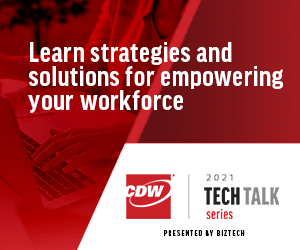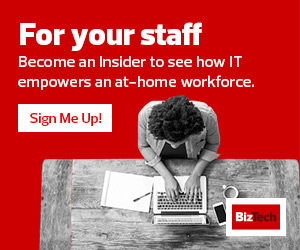Technology Is Playing a Crucial Role in Retaining Talent
Andrew Hicinbothem, product marketing manager for collaboration monitors at Dell Technologies, echoes the need to use technology to attract and retain talent. He cites a study by PWC about millennials at work, which noted that more than 50 percent of the global workforce will be millennials by 2020, and a full 66 percent said state‑of‑the‑art technology was important when considering an employer.
Hicinbothem says the PWC observations are “further confirmed by a Future Workforce study conducted by Dell and Intel, in which 82 percent of millennials believed that workplace technology would influence them when deciding to take a new job. In a more recent study on Gen Z, 95 percent of those surveyed said that the technology offered by an employer would be a factor in choosing among similar job offers, and 80 percent want to work with cutting-edge technology. It is clear that the right technology is extremely important in the current climate to recruit and retain the best talent.”
Portable Monitors Add Flexibility in Hybrid Working Environments
According to Stefan Engel, vice president and general manager of visuals business for the Intelligent Devices Group at Lenovo, “Lenovo research has found that improving the employee experience, or an employee’s full journey in an organization, is more than previously anticipated. Both IT departments and employees agree that satisfaction with their work technology has a direct impact on improving employee satisfaction. With remote and flexible work options solidifying as a must-have benefit across nearly all industries, small to medium-sized businesses need to adapt to retain staff, foster positive employee and customer experiences and drive productivity, all while advancing their business priorities.”
“The next-gen workforce, who has grown up with always-on technology, is driving faster adoption in business environments and wants smarter devices that are secure and enhance their productivity in a remote world,” Engle continues. “Businesses small and large that prepare for change by leveraging the right technology, solutions and services will be well positioned to recruit and retain talent, ensuring their business thrives.”
WATCH: Learn the key tools to enabling a work-from-anywhere model.
“This new-found freedom to work anywhere and from a space of any size has underlined a gap in the market for monitor technology. Lenovo envisions ultraslim and light mobile monitors with smarter ports as the smarter solution for working from the road and switching between devices and locations for work and play,” he says.
The Advantages of Portable Monitors Are Employee-Friendly
Hicinbothem touts the use of portable monitors, especially during a time of remote and hybrid work. “Portable monitors deliver dual-screen productivity to work. This allows you to present and collaborate anywhere, whether you’re at the office, at home or on the go. Portable monitors are ideal for people who have a lack of physical space for a monitor, especially in high-density cities. This is also ideal for those who prefer to work in various spots in the home and still have an extended screen. On-the-go professionals can use portable monitors for their on-the-road client presentations and work with an extended screen anywhere.”
Engel agrees, calling portable monitors the perfect tool for setting up workers in remote and hybrid environments. “It’s a portable screen that can be easily tucked away in any work bag and that fits on the corner of any tabletop surface when needed. Lightweight monitors come equipped with two identical USB-C ports to support power pass-through (up to 65 watts) to charge your laptop or smartphone while also powering the monitor simultaneously, for an elegant and simple one-cable solution. For easy use on the go, the mobile monitor is powered by the connected laptop through a shared battery,” he explains.
“Whether adding a convenient second display for comfortably sharing content in hybrid meeting spaces or from a worker’s home office to be easily stowed away later, Lenovo’s mobile monitors allow for easy and flexible extended use, thanks to an ergonomic stand capable of height adjustments,” he adds.













